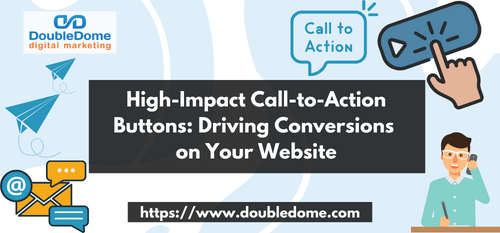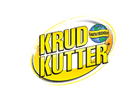By Jo Medico
The effectiveness of your call-to-action (CTA) buttons can make or break conversion rates. This article explores the art and science behind crafting high-impact CTA buttons that captivate visitors, compelling them to take the desired actions on your website.

The Psychology of Button Design
In the context of button design, each element—color, size, shape, and placement—plays a crucial role in influencing user behavior and creating a visual hierarchy that guides visitors toward conversion. Let’s explore their differences and how they contribute to the overall psychology of button design:
Color
Definition: Color refers to the visual aspect of the button, determined by the hue, saturation, and brightness.
Influence: Different colors evoke various emotions and associations. For instance, red may signify urgency or action, while blue might convey trust and calmness. The choice of color can impact how users perceive the button’s purpose and the overall brand.
Size
Definition: Size relates to the physical dimensions of the button, including its width, height, and overall surface area.
Influence: Larger buttons tend to attract more attention and suggest prominence. Size can signify the importance of a specific action or encourage users to interact. However, it’s crucial to find a balance—oversized buttons may be overwhelming, while too small buttons may be overlooked.
Shape
Definition: Shape refers to the form or outline of the button, such as square, round, or custom shapes.
Influence: Different shapes can convey distinct meanings. For example, rounded shapes often evoke a friendly and approachable feel, while sharp corners may imply precision or modernity. The choice of shape can influence the user’s perception of the button’s functionality and the overall aesthetic of the design.
Placement
Definition: Placement refers to the specific location of the button within the overall layout of a webpage.
Influence: The placement of a button determines its visibility and accessibility. Buttons strategically placed in prominent positions, such as at the center of the screen or near key content, are more likely to capture the user’s attention. The sequence of buttons also influences the user’s journey through the website, guiding them towards specific actions.
How They Work Together
Visual Hierarchy: The combination of these elements creates a visual hierarchy, guiding users toward the most important or desired actions. For example, a large, brightly colored, and centrally placed button may signify a primary call-to-action, while smaller, neutral-colored buttons in the periphery may represent secondary or less critical actions.
User Engagement: The careful orchestration of color, size, shape, and placement enhances user engagement. A well-designed button invites users to interact intuitively, ensuring a seamless and positive user experience.
Conversion Optimization: Understanding the psychological impact of these design elements allows designers to optimize buttons for higher conversion rates. By aligning the button design with the user’s expectations and motivations, designers can encourage users to take desired actions, such as making a purchase, signing up, or exploring further content.
In essence, the psychology of button design involves a thoughtful consideration of color, size, shape, and placement to influence user behavior and guide them toward meaningful interactions, ultimately contributing to the success of a website or application.
Crafting Compelling Copy
Uncover the secrets of crafting persuasive CTA copy. Learn how concise, action-oriented language can instill a sense of urgency and excitement, prompting users to click and engage.
Tips for Crafting Compelling Copy
Be Concise and Action-Oriented: Keep CTA copy short and direct. Use strong action verbs that prompt immediate engagement, creating a sense of urgency and excitement.
Highlight Benefits: Clearly communicate the benefits of clicking the CTA. Focus on what users will gain, emphasizing value and relevance.
Practical Implementation
CTA Copy: “Unlock Exclusive Deals Now!”
Tip: Use language that implies exclusivity and urgency to motivate users. The copy suggests immediate benefits and entices users to click for exclusive deals.
A/B Testing Strategies
Explore the importance of A/B testing for CTA buttons. Discover how testing variations in color, text, and positioning can provide valuable insights into what resonates best with your audience.
Tips for A/B Testing Strategies
Test One Variable at a Time: Conduct A/B tests by changing one element at a time (color, text, or positioning). This allows you to isolate the impact of each change and draw more accurate conclusions.
Analyze User Behavior: Beyond visual elements, analyze user behavior data. Look into metrics like click-through rates and conversion rates to determine the most effective variations.
Practical Implementation
Test Variation: Change the color of your CTA button from green to red.
Tip: Measure the performance of both versions by analyzing how the color change affects user engagement. Use the variant that yields higher conversions.
Mobile Optimization for Seamless Interaction
Understand the significance of mobile optimization for CTA buttons. With the majority of users accessing websites on mobile devices, learn how responsive design ensures a seamless and intuitive experience, driving conversions across platforms.
Tips for Mobile Optimization
Responsive Design: Ensure that CTA buttons adapt seamlessly to different screen sizes. Use responsive design principles to maintain clarity and functionality across various devices.
Thumb-Friendly Placement: Position CTA buttons where they are easily reachable by a user’s thumb on mobile devices, enhancing accessibility and user experience.
Practical Implementation
Mobile-Friendly CTA: Optimize a CTA button’s size and placement for easy thumb access.
Tip: Implement a design that ensures the CTA remains prominent and accessible on smaller screens, enhancing user interaction on mobile devices.
Strategic Placement on Landing Pages
Delve into the art of strategically placing CTA buttons on landing pages. Explore the best practices for aligning buttons with user intent, guiding them effortlessly through the conversion funnel.
Tips for Strategic Placement
Above the Fold: Place key CTAs above the fold to capture immediate attention. Users should see the most crucial calls-to-action without scrolling.
Inline with Content Flow: Align CTAs with the natural flow of content. Strategically position them where users are likely to make decisions or take actions in the conversion journey.
Practical Implementation
Above-the-Fold CTA: Position a primary CTA prominently at the top of the landing page.
Tip: By placing a compelling CTA above the fold, users immediately encounter the primary call-to-action, increasing the likelihood of engagement.
Creating Trust with Clear Expectations
Explore how clear and transparent CTA buttons build trust. Understand the importance of setting clear expectations and delivering on promises, fostering a positive user experience that encourages repeat conversions.
Tips for Creating Trust
Transparent Language: Use clear and transparent language in your CTA copy. Avoid ambiguity and clearly state what users can expect after clicking the button.
Consistent Messaging: Ensure that the CTA message aligns with the overall content and messaging on the page, establishing a sense of consistency and reliability.
Practical Implementation
Clear Expectation CTA: “Subscribe for Weekly Updates.”
Tip: By explicitly stating the action (“Subscribe”) and the outcome (“Weekly Updates”), users know exactly what to expect, fostering trust.
Incorporating Visual Elements
Unleash the impact of visual elements within CTA buttons. Whether it’s arrows, icons, or contrasting borders, discover how these additions can draw attention and guide users toward the desired action.
Tips for Visual Elements
Contrasting Colors: Use contrasting colors for CTA buttons to make them stand out. Choose colors that align with your brand and evoke the desired emotional response.
Iconography: Incorporate relevant icons or symbols to enhance visual appeal and provide additional context to the CTA.
Practical Implementation
Visual Element CTA: Add a bold icon next to your CTA text.
Tip: The icon provides a visual cue that complements the CTA message, making it more visually appealing and guiding users towards the desired action.
Dynamic CTA Personalization
Explore the realm of dynamic CTA personalization. Learn how user behavior data can be leveraged to deliver personalized calls-to-action, increasing relevance and resonance with each visitor.
Tips for Dynamic Personalization
User Segmentation: Segment users based on behavior data. Tailor CTAs to different segments, delivering personalized messages that resonate with specific audience interests.
Behavior-Triggered CTAs: Implement dynamic CTAs triggered by user actions, such as time spent on a page or previous interactions. Adjust the CTA message based on individual user behavior.
Practical Implementation
Behavior-Triggered CTA: Show a discount CTA to users who spent a significant amount of time browsing product pages.
Tip: By personalizing the CTA based on user behavior, you increase the likelihood of conversion by offering a relevant incentive.
Integration with Overall Website Design
Understand the importance of CTA button integration with overall website design. Discover how a cohesive design language enhances brand identity and ensures a harmonious user experience.
Tips for Integration with Design
Consistent Branding: Ensure that CTA buttons align with the overall design language and branding of the website. Consistency enhances brand identity and user trust.
Harmonious Color Palette: Use a harmonious color palette across the website, integrating CTA colors seamlessly into the overall visual scheme.
Practical Implementation
Branded CTA: Design the CTA button with colors and styles consistent with the website’s overall theme.
Tip Implementation: A CTA that harmonizes with the website’s design creates a cohesive and visually appealing user experience, reinforcing brand identity.
Conclusion
High-impact CTA buttons are not merely functional elements; they are strategic tools that wield the power to drive conversions and propel your online success. By mastering the art of design, crafting compelling copy, and employing strategic testing, businesses can transform their website’s call-to-action buttons into conversion magnets.
Unlock your business potential—schedule a FREE consultation with our experts today. Let’s amplify your digital journey together with our excellent Digital Marketing Services!








